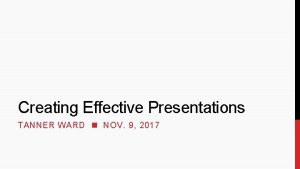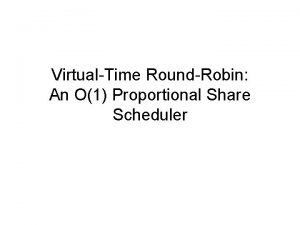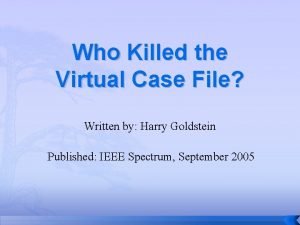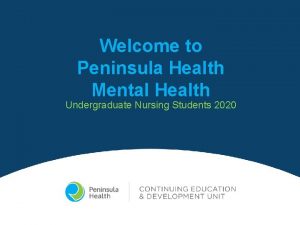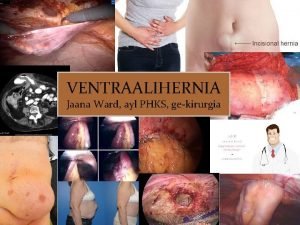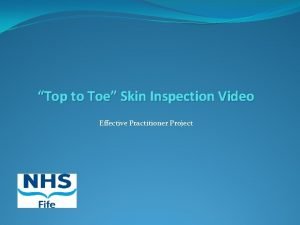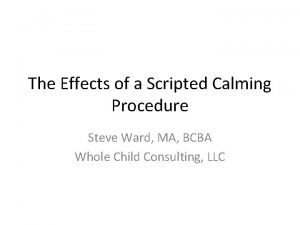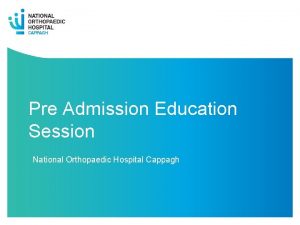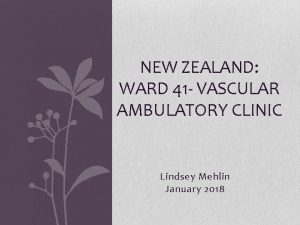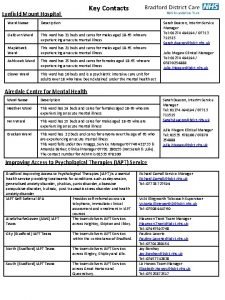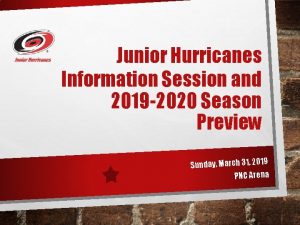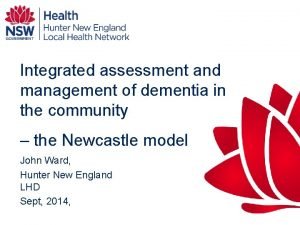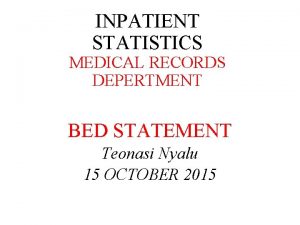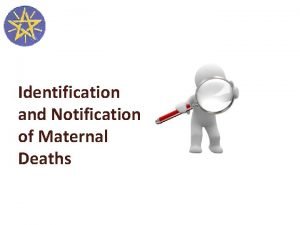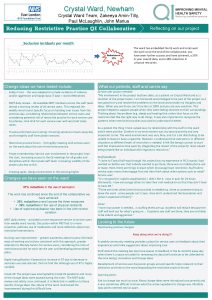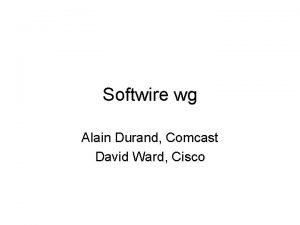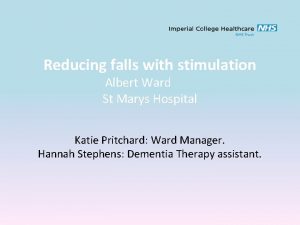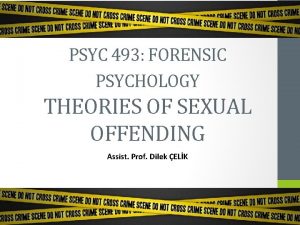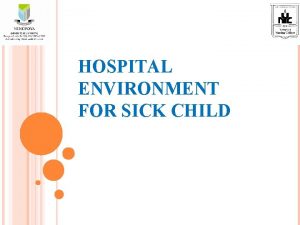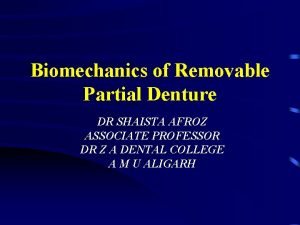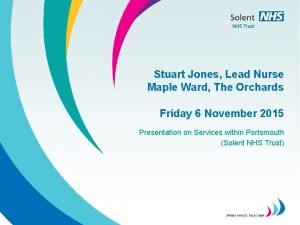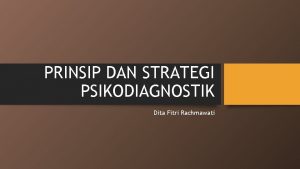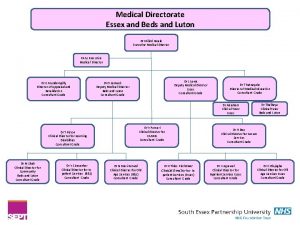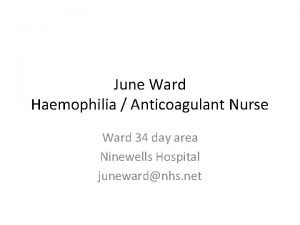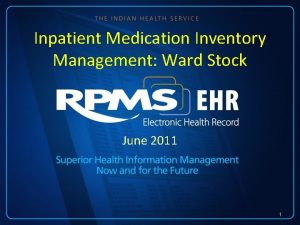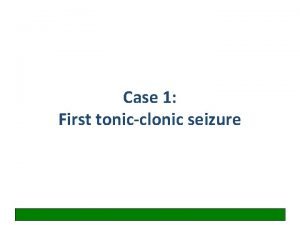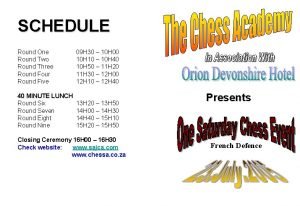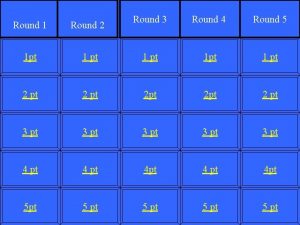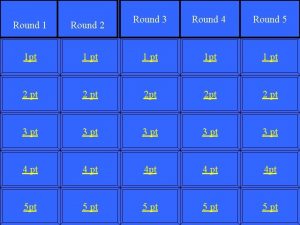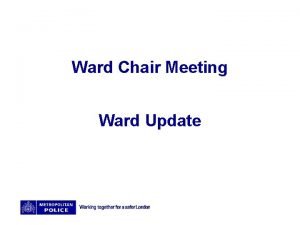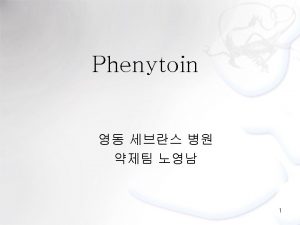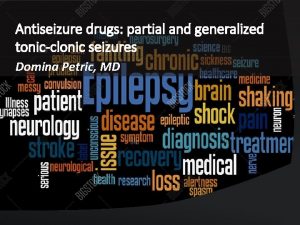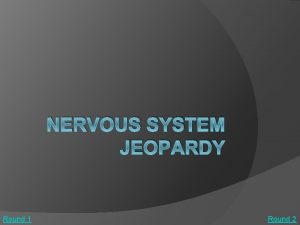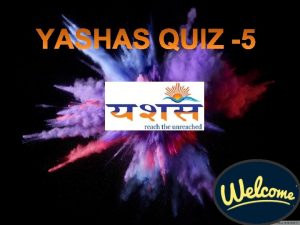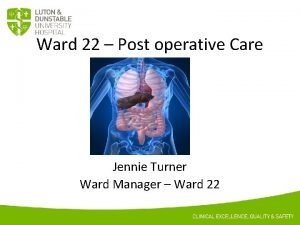Virtual Ward Round 2020 Case 1 First tonicclonic


































































- Slides: 66

Virtual Ward Round 2020

Case 1: First tonic-clonic seizure

Seizures and epilepsy T-C seizure Due to acute illness Provoked Single unprovoked Part of epilepsy (? unrecognised) Generalised epilepsy Idiopathic Young people with normal brains Focal epilepsy Symptomatic Structural brain abnormality (not always demonstrable) Any age; elderly

4 key questions to ask • • Was this a seizure? Were there any obvious provoking factors? Is there evidence of unrecognised epilepsy? What is the patient’s job and driving status?


Summary of NICE guideline: general • All adults with a new suspected seizure should be screened first by a physician then referred to a specialist and seen within 2 weeks • Good communication, including written communication, is vital • A specialist is ‘a doctor with expertise and training in epilepsy’ • The diagnosis of epilepsy in adults should be established by a specialist • When NEAD is suspected, patients should be referred to psychology/psychiatry services • AED treatment needs to be tailored to type of seizures and type of patient • Women must be given information about contraception, pregnancy, breastfeeding etc. • All patients with epilepsy should have a regular structured review • If seizures are not controlled, or there is diagnostic uncertainty, patients should be referred to a specialist centre ‘soon’ for further assessment

Summary of NICE guideline: investigations • An EEG should be performed only in patients where the history suggests an epileptic seizure – EEG is not diagnostic and should not be used to ‘rule out’ epilepsy • An EEG should be performed ‘soon’ (within 4 weeks) • MRI is the imaging of choice in epilepsy and should be performed ‘soon’ • Imaging is not routinely required when a diagnosis of idiopathic generalised epilepsy has been made • CT can be used acutely to determine whether a seizure has been caused by an acute neurological problem • A 12 -lead ECG should be performed in all patients with suspected epilepsy • Serum prolactin measurement is not recommended • Epileptic seizures should be classified using a) a description of the seizure, b) seizure type, and c) aetiology or syndrome.

Summary of NICE guideline: treatment (brief summary for non-specialists) Focal seizures • Carbemazepine or Lamotrigine as first-line • Leveteracitam is not considered cost-effective (2011 analysis) • Leveteracitam, oxcarbazepine, sodium valproate second-line • Be aware of the teratogenic risks of sodium valproate • (Other drugs in refractory seizures should be prescribed by a tertiary epilepsy specialist) T-C seizures • Sodium valproate first-line • Be aware of the teratogenic risks of sodium valproate • Offer Lamotrigine if sodium valproate not suitable, but be aware this can exacerbate myoclonic seizures in JME • (Leveteracitam may be used for myoclonic seizures) • Lamotrigine, Leveteracitam, Topiramate second-line

Summary of NICE guideline: treatment (brief summary for non-specialists) When would you treat after a first tonic-clonic seizure? • • The person has a neurological deficit Brain imaging shows a structural abnormality The EEG shows unequivocal epileptic activity (? ) The person/carers consider the risk of having a further seizure unacceptable

Case 3: Chest pain

NICE guidance (CG 95, 2016) • Think about ACS in: – Cardiac sounding CP lasting >15 mins – New onset chest pain, or abrupt deterioration in previously stable angina, occurring frequently or with little or no exertion • Do not use response to GTN to make a diagnosis of cardiac pain • Do not exclude an ACS with a normal resting ECG • Do troponin at presentation and 3 -6 hrs later if the first troponin is positive • Consider a single high-sensitive troponin at presentation only if the first test is normal

NICE guidance (CG 95, 2016) • If there is no ACS, but you think the pain could have been due to angina: – Offer 64 -slice CT coronary angiography as an OP – For people with already confirmed CAD, offer non-invasive functional testing* – Offer non-invasive functional testing in people who have an equivocal CT coronary angiography result *Myocardial perfusion scintigraphy with single photon emission computed tomography (MPS with SPECT)

Classification of unstable angina • • New onset severe angina (e. g. at min exertion) Angina at rest >20 mins Crescendo angina Post-MI angina (30 days) Roffi M, Patrono C, Collet JP, et al. 2015 ESC guidelines for the management of acute coronary syndromes in patients presenting without persistent ST-segment elevation: Task Force for the Management of Acute Coronary Syndromes in Patients Presenting without Persistent STSegment Elevation of the European Society of Cardiology (ESC). Eur Heart J. 2016; 37(3) : 267 -315 Hamm CW and Braunwald E. Circulation 2000; 102: 118 -122

NICE guidance (CG 94, 2013) Unstable angina / NSTEMI ASA + clopidogrel Fondaparinux* Information + drug treatment RISK ASSESSMENT Low risk >1. 5% Intermed/high risk >3% GRACE 88+ Medical Rx Angiography ? Ticagrelor ? GP inhibitors


Case 5: Paracetamol overdose

Paracetamol poisoning • • Significant od is >150 mg/kg taken in <1 h High risk patients >75 mg/kg* (e. g. low BMI etc. ) Single paracetamol level at >4 h Treat patients whose level is above or around the line Treat patients who present >8 h while awaiting blood results A ‘staggered’ od is when paracetamol is taken over 1 h Do not use the treatment nomogram in these cases – Treat if >150 mg/kg taken* – Unless it is >24 h and pt is asymptomatic, paracetamol levels are nad, and U&E, LFT and clotting are normal • If unsure --> treat


True or false? Activated charcoal should be administered without delay FALSE Gut decontamination with activated charcoal may reduce absorption of paracetamol minimising the need for NAC but is only effective if given within 1 h of overdose. Gastric lavage is not recommended and may actually enhance early absorption.

True or false? If the patient develops wheeze, itching and a red rash, NAC should be stopped immediately and the patient treated with IM adrenaline, IV antihistamines, nebulised beta-agonists and IV hydrocortisone FALSE This is not anaphylaxis (BP is normal). This is a pseudoallergic (anaphylactoid) reaction which occurs in up to 20% of people given intravenous NAC. Treatment is with antihistamines only ± bronchodilators if wheezy (NAC may precipitate acute asthma). The infusion can usually be restarted after a short interval e. g. 30 mins or at half the rate (the reaction tends to occur during the first bag as it is concentration dependent).

Result Pre-NAC Post-NAC Na 137 K 4. 5 3. 2 Urea 4. 0 4. 3 Creatinine 56 60 INR 0. 9 1. 2 ALT 50 60

True or false? The NAC infusion should be continued as the INR has risen from 1. 0 to 1. 3 indicating early hepatotoxicity FALSE NAC treatment itself may cause mild increases in PT (destabilises proteins including clotting factors) and an INR of ≤ 1. 3 post-infusion is acceptable (especially as the ALT has not risen from baseline).

Updated paracetamol guidelines (Australasia) • Two-bag acetylcysteine infusion regimen (200 mg/kg over 4 h, then 100 mg/kg over 16 h) • Similar efficacy but significantly reduced adverse reactions compared with the previous three-bag regimen • Massive paracetamol overdoses that result in paracetamol concentrations more than double the nomogram line should be managed with an increased dose of acetylcysteine • All potentially toxic modified-release paracetamol ingestions (≥ 10 g or ≥ 200 mg/kg, whichever is less) should receive a full course of acetylcysteine • Patients ingesting ≥ 30 g or ≥ 500 mg/kg should receive increased doses of acetylcysteine Chiew AL, Reith D, Pomerleau A et al. Updated guidelines for the management of paracetamol poisoning in Australia and New Zealand. Med J Aus 2019; doi: 10. 5694/mja 2. 50428

Gov. uk safety update

Summary: paracetamol poisoning • • Calculate dose/kg to estimate toxicity Take levels once at ≥ 4 h Treat if above or around the line on the nomogram Start treatment immediately if ≥ 8 h since OD and review with levels Levels are useful up to 15 h but irrelevant in staggered OD Anaphylactoid reactions to NAC are common and are not an ‘allergy’ NAC may cause a slight increase in INR. Continue NAC if INR >1. 3 or significant elevation in transaminases Beware of hypokalaemia (consider IV replacement if other risk factors for hypokalaemia and/or arrhythmia)

VISA risk assessment • • V – violent or pre-planned method I – irrational thoughts or psychosis S – ongoing suicidal ideation A – alone (in department or at home)

Case 6: Fall

Balance VOR perception posture

FALLS Due to acute illness Single fall ‘Faller’ (2 or more falls)

FALLS Due to acute illness Unexplained falls Dizziness Single fall ‘Faller’ (2 or more falls) Multifactorial falls assessment • History • Vision • L+S BP and medication review • 12 -lead ECG and cardiovascular • Get-up-and-go-test (+/- neurological) • Refer PT + OT • Bones ACTION!


There is no such thing as a ‘mechanical fall’ in older people (at least, it is very uncommon)

Stairs with a swirly-patterned carpet

poor vision bifocals medication causing OH falls diabetic peripheral neuropathy OA /quads wasting unsteady on turning due to old stroke

BP responses in different types of syncope BP (mm. Hg) VVS 120 OH 60 “Elderly dysautonomic pattern” BP after standing Time (mins)

NICE guideline CG 161, 2013

Case 12: Acute unilateral monoarthropathy (hot joint)


Management of hot swollen joint in adults • Short history, hot swollen joint with restricted movement should be treated as septic arthritis until proven otherwise (mortality 11%) • Even in absence of fever • Aspirate, aspirate !!! • Refer prosthetic joints to Orthopaedics • Organisms on Gram stain has 60% sensitivity • Always take blood cultures • Serum urate is of no diagnostic value

Management of hot swollen joint in adults • Commonest hot joint in GP/ED is the metatarsalphalangeal joint which is almost always due to gout and can be diagnosed clinically • Plain X-rays may show chondrocalcinosis but otherwise are of no value • If there is any doubt re: septic joint, do not inject steroids • In septic arthritis, half of pts have pre-existing joint disease • Differentials: reactive arthritis (especially younger pts), gout/pseudogout, septic arthritis, flare of existing arthritis



Case 14: Iron deficiency anaemia

Interpreting iron studies • The serum markers of iron deficiency anaemia include: – Low ferritin – Low transferrin saturation – Low iron – Raised total iron-binding capacity • Serum ferritin is the most powerful test for iron deficiency in the absence of inflammation (A). BSG guidelines for the management of iron deficiency anaemia. Gut 2011; 60: 1309 -1316

Interpreting iron studies • A low serum ferritin (< 15 mg/L) provides absolute evidence of iron deficiency anaemia, due to: 1. Inadequate intake 2. Inadequate absorption 3. Loss (bleeding) 4. ‘Functional deficiency’ – sufficient stores are inadequately utilised e. g. chronic infectious, inflammatory or malignant conditions. Kelly AU et al. Interpreting iron studies. BMJ 2017; 357: j 2513

Interpreting iron studies • Ferritin levels of more than 15 mg/L are difficult to interpret if infection or inflammation is present • A serum ferritin concentration of greater than 100 mg/L usually rules out iron deficiency anaemia • For people in whom the ferritin level is indeterminate (16 to 99 mg/L), further tests may be required to ascertain iron status … (in anaemia) NICE CKS iron deficiency

Interpreting iron studies • Haemoglobin electrophoresis is recommended when microcytosis and hypochromia are present in patients of appropriate ethnic background to prevent unnecessary GI investigation BSG guidelines for the management of iron deficiency anaemia. Gut 2011; 60: 1309 -1316

Interpreting iron studies • In the second and third trimesters of pregnancy, ferritin levels fall independently of iron stores – but a level of < 15 mg/L indicates iron depletion, and treatment should be considered when levels fall below 30 mg/L as this indicates early iron depletion which will continue to fall unless treated. NICE CKS iron deficiency

Interpreting iron studies • In patients with CKD, normal or high ferritin cannot exclude functional iron deficiency - % of hypochromic red cells (%HRC) is recommended if the sample can be processed within 6 hours • In chronic kidney disease, a cutoff of 100 mg/L has been suggested, while a cutoff of 200 mg/L has been suggested for people undergoing haemodialysis … Kelly AU et al. Interpreting iron studies. BMJ 2017; 357: j 2513

BSG guidelines for the management of iron deficiency anaemia. Gut 2011; 60: 1309 -1316


Case 15: ? PE – see PE pathway

Case 16: Syncope

Collapse ? cause transient loss of consciousness Due to acute illness Syncope Seizure Hypoglycaemia Intoxication etc

Collapse ? cause transient loss of consciousness Due to acute illness Treat this Syncope Seizure Psychogenic Intoxication etc

Collapse ? cause transient loss of consciousness Due to acute illness 1. 2. 3. 4. Syncope Neurally-mediated Orthostatic hypotension Cardiac arrhythmia Structural Seizure Hypoglycaemia Intoxication etc TLOC alone is never a TIA …

Syncope (‘interrupt’) Syncope is a symptom, (not a diagnosis) which has 5 essential elements: • • loss of consciousness loss of voluntary muscle tone ( fall) relatively rapid onset recovery is spontaneous, complete and usually prompt The underlying mechanism is transient global cerebral hypoperfusion

England data: syncope and collapse


Causes of syncope in patients referred to syncope services Syncope Neurally mediated VVS Situational • Unpleasant stimuli • Micturition • Cough • Swallow • Brass instrument CSH Orthostatic Ageing Medication-induced 2 o autonomic failure 1 o autonomic failure Arrhythmias (20%) e. g. Sick sinus syndrome AV blocks Paroxysmal SVT/VTs Long QT Structural (rare) Ao stenosis HOCM

The initial evaluation • • • History from patient History from any available eye-witnesses! Cardiovascular examination 12 -lead ECG Lying and standing BP

What tests should I do in syncope? • FBC, U&E, CRP (older people), glucose • 12 -lead ECG • Patients may need investigating for postural hypotension… • Do not do the following: – Troponin if no chest pain / ECG changes* – CT brain – Heart tests in people with normal hearts!


TLOC – single episode (DVLA June 2017) Disorder Group 1 Typical VVS Group 2 (bus, lorry) and taxi Must not drive and must inform DVLA Must not drive 3 months and notify DVLA Standing Sitting - Cough syncope Cannot drive for 6 months unless ‘cured’ Cannot drive for 5 years unless ‘cured’ Unexplained syncope If no cause identified licence revoked 6 months If no cause identified licence revoked 12 months (any posture) Can drive after 4 weeks if treated, otherwise 6 months Can drive after 3 months if treated, otherwise 12 months LOC with seizure markers Cannot drive for 6 months, or 12 months if high risk of recurrence Cannot drive for 5 years (any posture) Cardiovascular syncope Ok if avoidable trigger

TLOC – recurrent episodes (DVLA June 2017) Disorder Group 1 Typical VVS Group 2 (bus, lorry) and taxi Must not drive and must inform DVLA Must not drive (indefinite, pending investigations) Standing Sitting - Cough syncope Cannot drive for 12 months unless ‘cured’ Cannot drive for 5 years unless ‘cured’ Unexplained syncope If no cause identified licence revoked 12 months If no cause identified licence revoked 10 years Must not drive, possibly up to 12 months Can drive after 3 months if treated, otherwise 12 months Cannot drive for 6 months, or 12 months if high risk of recurrence Cannot drive for 5 years (any posture) Cardiovascular syncope (any posture) LOC with seizure markers Ok if avoidable trigger

What three things have you learned this morning?
 Kelsey fry technique
Kelsey fry technique Project failure case study
Project failure case study Ward delimitation 2020
Ward delimitation 2020 Best case worst case average case
Best case worst case average case Tanner ward case
Tanner ward case Pickle in the tannenbaum
Pickle in the tannenbaum Virtual round robin
Virtual round robin Has virtual functions and accessible non-virtual destructor
Has virtual functions and accessible non-virtual destructor Uac first round offers
Uac first round offers Who killed the virtual case file
Who killed the virtual case file Long case and short case
Long case and short case Binary search performance
Binary search performance Case western reserve university case school of engineering
Case western reserve university case school of engineering Bubble sort algorithm pseudocode
Bubble sort algorithm pseudocode Bubble sort best case and worst case
Bubble sort best case and worst case Bubble sort best case and worst case
Bubble sort best case and worst case Ambiguous case
Ambiguous case Apicatt
Apicatt Ward v. wilbanks
Ward v. wilbanks Ward accreditation
Ward accreditation Ward de cooman
Ward de cooman Jaana ward
Jaana ward Ward management definition
Ward management definition Balfour ward cameron hospital
Balfour ward cameron hospital Ward detwiler
Ward detwiler Steve ward calm counts
Steve ward calm counts Stake temple and family history consultant
Stake temple and family history consultant Aintree hospital wards
Aintree hospital wards Direct retainer classification
Direct retainer classification Cappagh admissions
Cappagh admissions Prd nischay soft yojana
Prd nischay soft yojana Numbers by rachel ward
Numbers by rachel ward Ward 41 auckland hospital
Ward 41 auckland hospital Alan ward fbi
Alan ward fbi Lynfield mount hospital wards
Lynfield mount hospital wards Nagib ward hockey
Nagib ward hockey Barney ward
Barney ward Dr john ward geriatrician newcastle
Dr john ward geriatrician newcastle What is daily bed statement
What is daily bed statement Objectives of maternity ward
Objectives of maternity ward Language
Language Non floor stock system
Non floor stock system Steve ward bcba
Steve ward bcba Dee w hock
Dee w hock Crystal ward newham
Crystal ward newham Patient admission
Patient admission Bianca ward
Bianca ward Stock ward
Stock ward Bike
Bike Henneage ward
Henneage ward David ward cisco
David ward cisco Albert ward st marys
Albert ward st marys Ward and siegert's pathways model
Ward and siegert's pathways model Dee ward hock
Dee ward hock Direct and indirect retainer
Direct and indirect retainer Care of sick child in hospital
Care of sick child in hospital Fifth ward junior high school
Fifth ward junior high school Biomechanics of removable partial denture
Biomechanics of removable partial denture Ward economic development corporation
Ward economic development corporation The orchards st james
The orchards st james Kierra ward
Kierra ward Model konseptual maloney dan ward
Model konseptual maloney dan ward Milind karale
Milind karale Ward 34 ninewells
Ward 34 ninewells Gordale scar james ward
Gordale scar james ward Ward stock management
Ward stock management Floor or ward stock system
Floor or ward stock system




